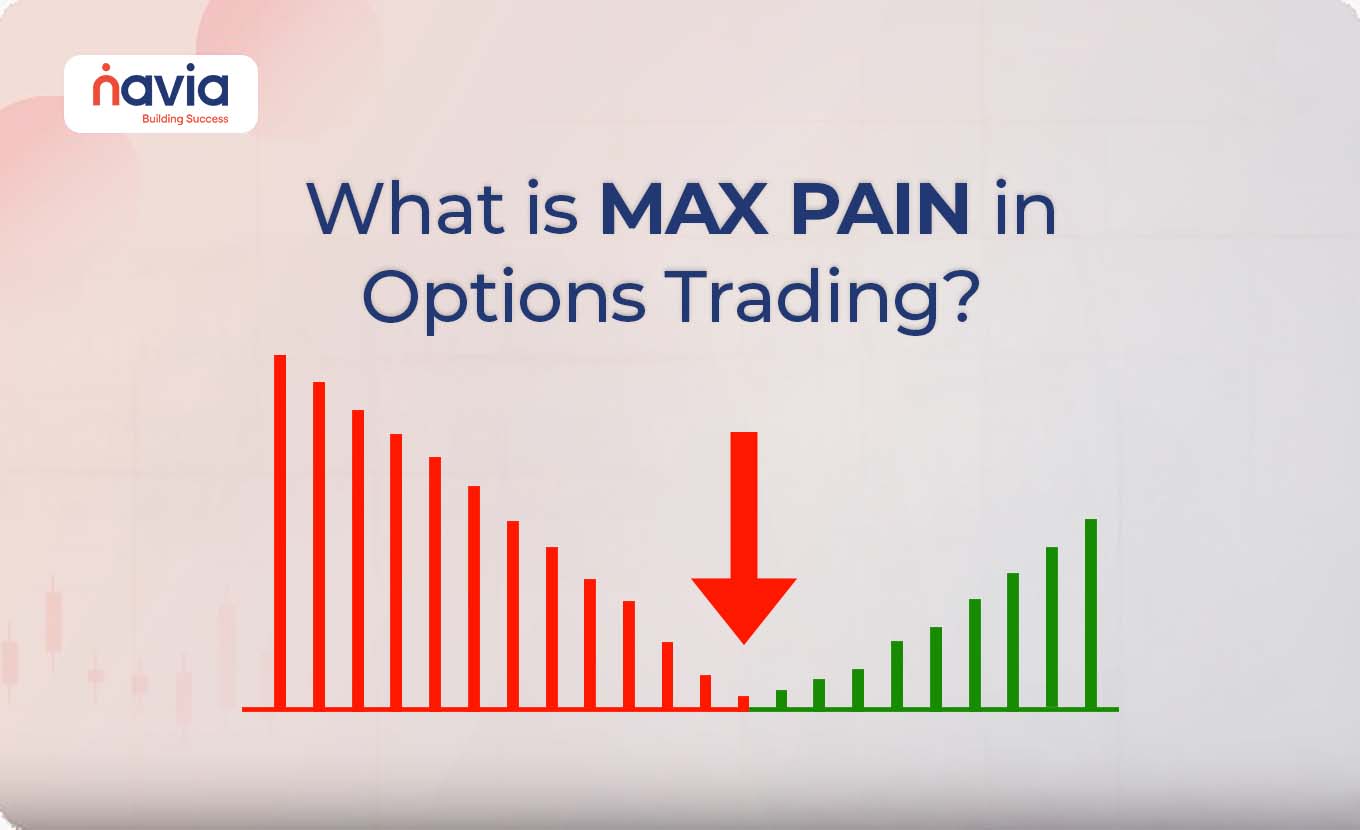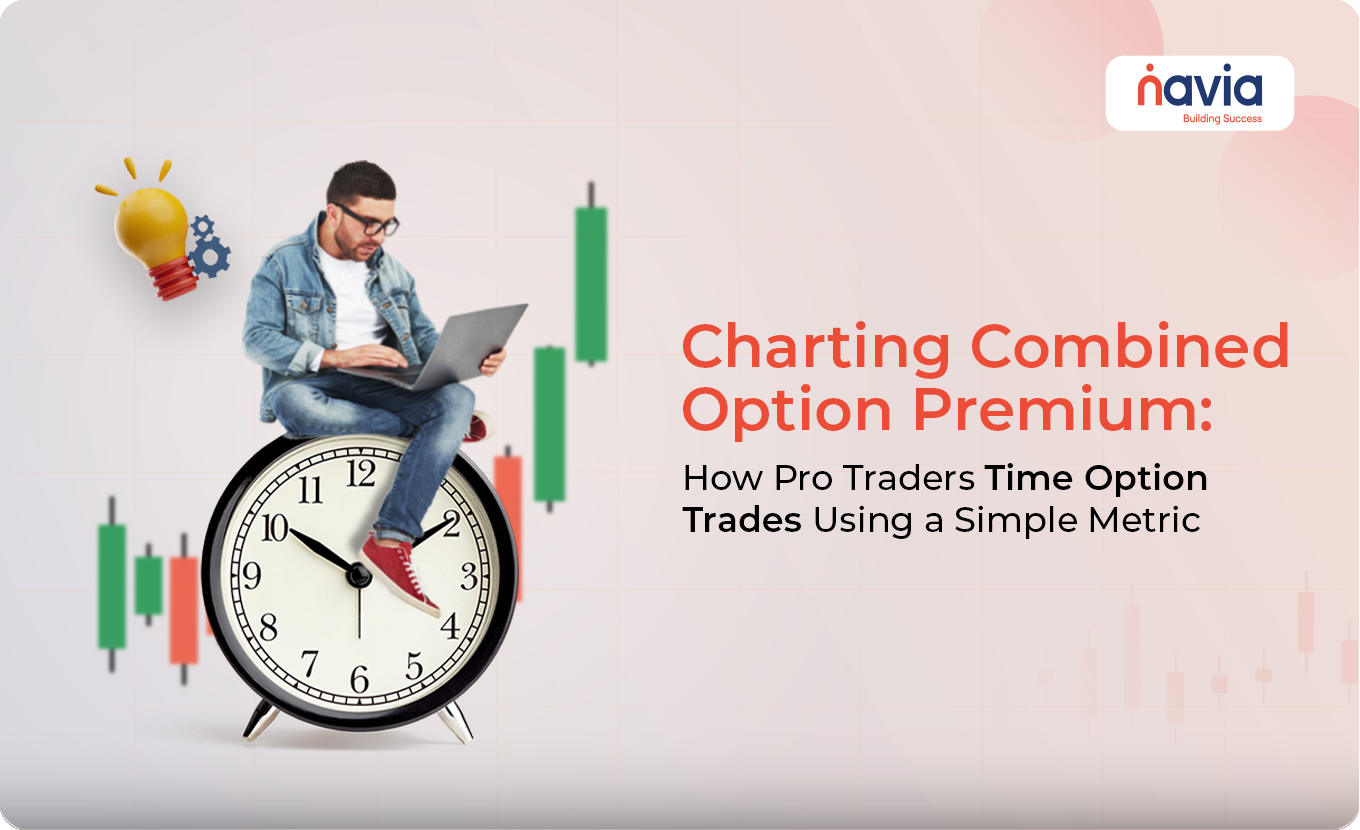What is a Put Option in the Share market?

Within the equity market, managing risk while aiming for maximum returns is a key goal for investors, and a put option is a powerful tool that can help achieve it. It is a financial contract that will provide the investor with the right (not the obligation) to sell an asset at a fixed price within a timeframe. Unlike a call option, it allows to purchase of an asset, but a put option offers a strategic advantage in bearish market environment.
So, to understand what is a put options and how put options work will help everyone to protect their portfolio in declining markets. Setting a target price will lock in potential gains and hedge you against market volatility. If you’re new to options trading this blog will educate you about it.
What is a Put Option?
As we already know, that put option is a financial derivative that gives the holder the right (not the obligation) to sell an underlying asset (like stock, commodity or index) at a fixed strike price within a period. The major use of it by investors to hedge against potential losses on the reduction of the asset’s price. To purchase the contract the buyer pays the seller a premium, each contract represents 100 shares of the stock.
For example, if an asset’s price is falling below the strike price they can sell it at a higher price, there the holder can get profit. In other hand, if the price is increase above the strike price the holder should be wait for option expire, in this case they can only lose their premium.
How Put Options Work?
Put options gives the right to the buyer to sell specific stock at a fixed price within the specific time. Here’s a breakdown to easily understand the process;
Key Components of a Put Option
🠖 Underlying Asset: The stock or asset the option is based on.
🠖 Strike Price: The price at which the buyer can sell the asset.
🠖 Expiration Date: The deadline of the option.
🠖 Premium: The cost to buy the option.
If you buy a put option;
You can make a profit when the stock goes down.
For example;
You buy a put option on stock ABC with a strike price of ₹1,200 and pay a premium of ₹50 per share. If the stock falls to ₹1,000, you can still sell it for ₹1,200, and you make a profit of ₹150 per share after accounting for the premium. If the stock stays above ₹1,200, the option expires worthless, and you lose the ₹50 premium paid.
If you sell a put option;
You are obligated to buy the stock at the strike price if the buyer exercises the option. You profit if the stock stays the same or goes up, but you risk losses if the stock drops significantly.
So, investors buy the put option in the time when the price of the underlying stock will decrease, on that time they can easily sell it at a higher price than the market and they can earn profit. To get this right they have to pay the premium.
How to Buy a Put Option?
Put option is a contract that gives investors the right but not the obligation to sell an asset/stock at a strike price before the expiration date. You will need a brokerage account for supporting options trading. You have to ensure that your account is enabled for options trading before starting trading.
You have to choose which assets or stock you want to trade, for example, if you think a stock is going to fall in value you can buy them as a put option. Pick a date that allows the time for the asset to potentially move in the direction of your expectation. You can select weekly, monthly or quarterly expiration date as per your wish.
Strike price means the price that you decided to sell the underlying asset. There are two types of strike price they are;
🔸 Higher Strike Price: It will be more expensive but if the asset price decreases it becomes profitable.
🔸 Lower Strike Price: It will be cheaper but less likely to end in profit unless the asset price decreases significantly.
After the selection of expiry date and strike price now you can place your order to buy the put option. But you must specify some major factors;
🔸 Quantity: Here you must mention how many contracts you want to buy; each option contract generally represents 100 shares.
🔸 Order Type: Market order (buy at the current price) or Limit order (buy at a specific price).
After the purchasing of a put option, you can track the price of the underlying stock. If the price falls below the strike price you can sell it for profit. If it’s dropped below the price, you can exercise the option.
Exiting from the put option through two ways they are, Sell Option and Exercise Option.
How to Sell a Put Option?
Proper understanding the basics of what is a put option is necessary for trading by managing the risks and making good financial decisions. When you sell a put option, you are taking on the obligation to buy the asset at the strike price if the buyer chooses to exercise the option. And the setting up of a brokerage account and the selection of underlying assets is like buy a put option process.
You must pick a strike price which you agree to buy the underlying asset if the put is exercised. Determining an expiration date as per your choice, you have to decide how long you want to hold your position.
After the selection of asset, strike price and expiration date now you can place the sell order for the put option. If you sell the put, you’ll receive the premium that the buyer pays for the option.
Monitoring position is an essential step for the process so don’t skip this step, if the price of the asset stays above the strike price, the put option will expire worthless, and you’ll keep the premium. If price falls below the strike price the buyer may exercise the option, and you’ll be required to buy the asset at the strike price.
Closing the position (optional), if you no longer want to be exposed to the risk, you can buy back the put option before it meets its expiry date.

Example of a put option on a stock
You buy a put option on stock ABC with a strike price of ₹1,900, paying a premium of ₹100 per share. If the stock falls to ₹1,700, you can sell it at ₹1,900, making a profit of ₹200 per share, minus the ₹100 premium, resulting in ₹100 profit. If the stock rises above ₹1,900, the option expires worthless, and you lose the ₹100 premium.
Advantages of put options
1. Flexibility: Put option can be used to speculate on price decrease or to protect long positions in stocks.
2. Limited Loss: The loss of investors in the put option is limited to the premium paid for the option.
3. Risk Management: It acts as a hedge to protect other investments from losses in a declining market environment.
4. Earn Profit from Falling Prices: If the underlying asset price declines the investors can get profit.
5. Leverage: Put option offers the potential to control a larger position with a smaller investment, it is called the premium.
Conclusion
Put option in stock market, offering the ability to get profit from falling stock prices with limited risk. And is providing both flexibility and leverage by purchasing a put option. Most investors use this essential tool in their strategy to manage risks and maximize their profit.
If you’re interested in navigating the world of options trading with ease, Navia offers powerful tools and expert insights to help you make informed decisions. Start trading smarter with Navia!
Do You Find This Interesting?
Frequently Asked Questions
What is the advantage of buying a put option?
A put option offering the ability to profit from a declined asset price and limiting your potential loss to the premium paid.
What is F&O?
F&O (Futures and Options) are financial derivatives that will help traders to speculate on the price movement of the underlying asset or stock.
What are the risks of Put Options?
The major risk of put options is, if the stock price doesn’t fall below the strike price the entire premium will lose. And the time decay will reduce the options value as expiration approaches.
How to calculate Put Options?
To calculate the profit or loss from a put option use this formula;
Profit/Loss = (Strike Price – Market Price) – Premium Paid
If the result is positive means the put is in profit; if it is negative, it’s a loss.
Are puts cheaper than calls?
Yes. Put options cheaper than call options, because puts typically have a lower probability of being exercised when the market is bullish, leading to lower premiums.
DISCLAIMER: Investments in the securities market are subject to market risks, read all the related documents carefully before investing. The securities quoted are exemplary and are not recommendatory. Brokerage will not exceed the SEBI prescribed limit.






